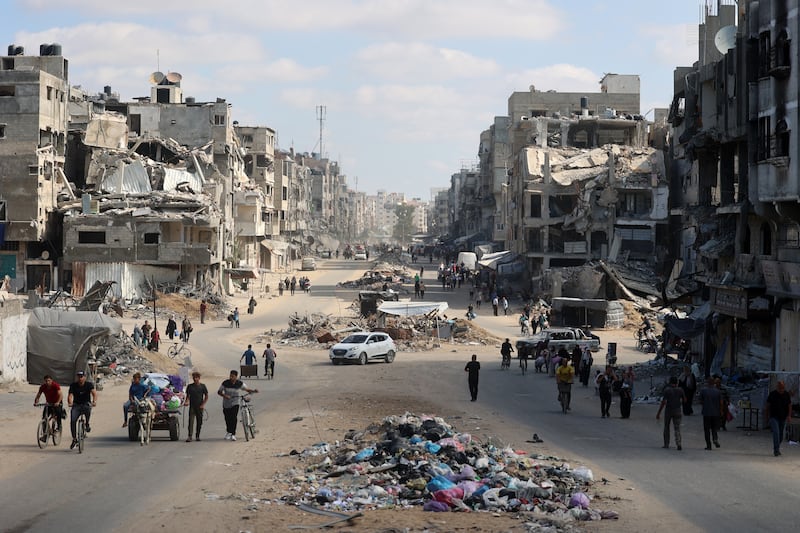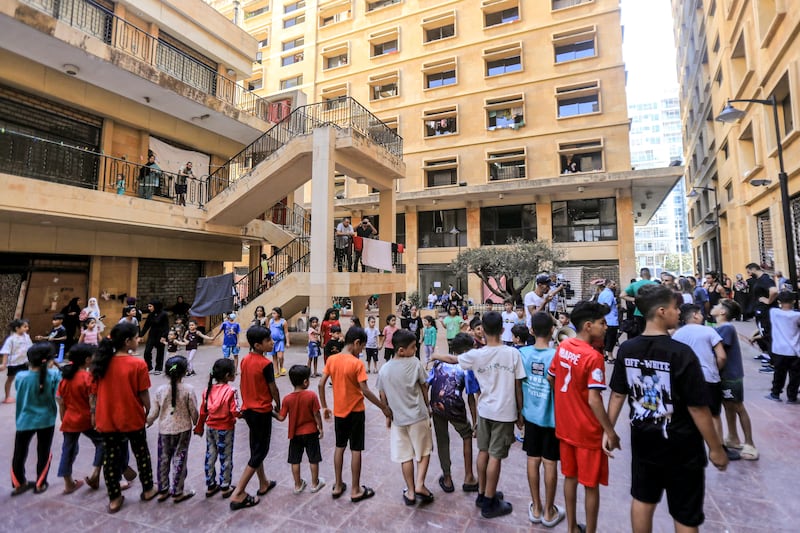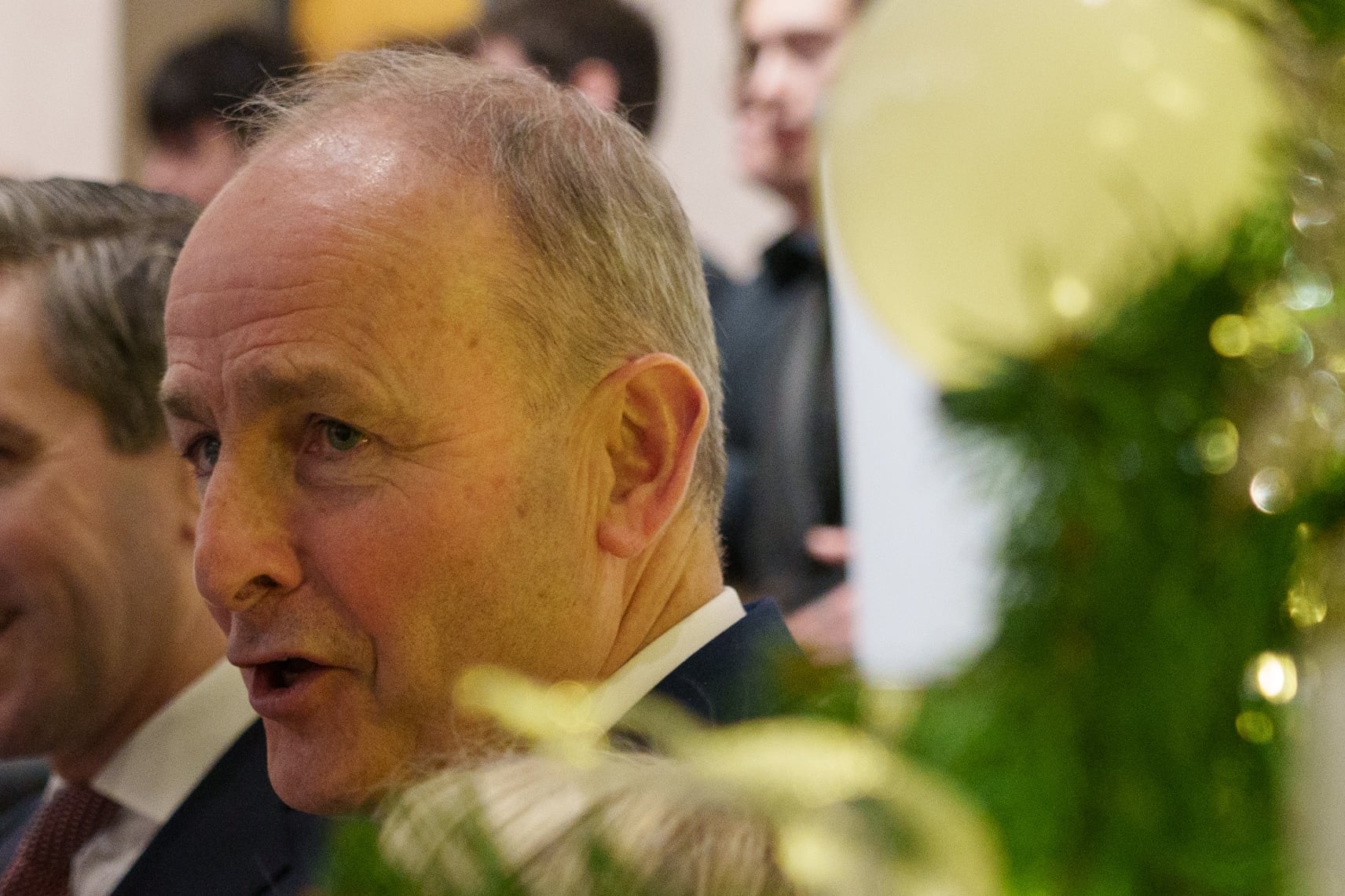The United States has told Israel it must take steps in the next month to improve the humanitarian situation in Gaza or face potential restrictions on US military aid, US officials said, in the strongest such warning since Israel’s war with Hamas began a year ago.
US secretary of state Antony Blinken and defence secretary Lloyd Austin wrote to Israeli officials on Sunday demanding concrete measures to address the worsening situation in the Palestinian enclave amid a renewed Israeli offensive in northern Gaza, US officials said on Tuesday.
Failure to do so could affect US policy, said the letter, which was first reported by Israeli News 12.
“We are particularly concerned that recent actions by the Israeli government ... are contributing to an accelerated deterioration in the conditions in Gaza,” said a copy of the letter posted by an Axios reporter on X.
READ MORE
The letter cited restrictions Israel was imposing, including those on commercial imports, the denial of most humanitarian movements between northern and southern Gaza, and “burdensome and excessive” restrictions on what goods can enter Gaza.
White House national security spokesperson John Kirby said the letter “was not meant as a threat” but reiterated the urgency of increasing humanitarian assistance in Gaza.
“It appears to us that they (the Israelis) are taking this seriously,” Mr Kirby said of the letter, without elaborating.
The Israeli embassy in Washington declined to comment.
The letter is the clearest ultimatum yet to prime minister Binyamin Netanyahu’s government since the Gaza conflict began, raising the prospect of a shift in Washington’s support for Israel.
The letter outlined specific steps Israel must take within 30 days, including enabling a minimum of 350 trucks to enter Gaza per day, instituting pauses in fighting to allow aid delivery and rescinding evacuation orders to Palestinian civilians when there is no operational need.
“Failure to demonstrate a sustained commitment to implementing and maintaining these measures may have implications for US policy ... and relevant US law,” the letter said.
Meanwhile, Hizbullah’s deputy secretary general Naim Qassem said on Tuesday the Iran-backed group would inflict “pain” on Israel but he also called for a ceasefire as the conflict continues between them in south Lebanon.
Israel has been putting pressure on Hizbullah since it began incursions into the region after killing Hizbullah leaders and commanders, including its veteran secretary general Hassan Nasrallah last month.
“The solution is a ceasefire, we are not speaking from a position of weakness. If the Israelis do not want that, we will continue,” Mr Qassem said in a recorded speech.
There was no immediate comment from Israel, which says its operation in Lebanon aims to secure the return of tens of thousands of residents forced to flee their homes in northern Israel because of Hizbullah attacks.
Israel has issued military evacuation orders affecting more than a quarter of Lebanon, the United Nations refugee agency said on Tuesday, two weeks after the Israeli military began incursions into south Lebanon to battle Hizbullah.

The figures underscore the heavy price Lebanese are paying as Israel tries to destroy the Iran-backed militant group’s infrastructure in their conflict, which resumed a year ago when it began firing rockets at Israel in support of Hamas at the start of the Gaza war.
The UN refugee agency’s Middle East director, Rema Jamous Imseis, said new Israeli evacuation orders to 20 villages in southern Lebanon meant more than a quarter of the country was now affected.
Israeli strikes have killed at least 2,350 people over the last year, the Lebanese health ministry said, and more than 1.2 million people in Lebanon have been displaced.

The majority have been killed since late September when Israel expanded its military campaign. The toll does not distinguish between civilians and combatants.
The health ministry said 41 people were killed and 124 were wounded on Monday.
About 50 Israelis, both soldiers and civilians, have been killed, according to Israel.
Israel expanded its bombing campaign in Lebanon on Monday, killing at least 22 people in a strike in the north on a house where displaced people were sheltering, health officials said.
Israel’s military said about 20 projectiles crossed from Lebanon into Israeli territory after sirens sounded in the Haifa Bay and Upper Galilee areas, and that some were intercepted.
The Pentagon said meanwhile that components for an advanced anti-missile system began arriving in Israel on Monday.
The Middle East remains on alert for Israel to retaliate against Iran for an October 1st barrage of missiles launched in response to Israel’s assaults on Lebanon.
Israeli military strikes killed at least 50 Palestinians across the Gaza Strip as Israeli forces tightened their squeeze around Jabilia in the north of the enclave, amid fierce battles with Hamas-led fighters.
Palestinian health officials said at least 17 people were killed by Israeli fire near Al-Falouja in Jabilia, the largest of Gaza’s eight historic refugee camps, while 10 others were killed in Bani Suhaila in eastern Khan Younis in the south when an Israeli missile struck a house.
Earlier on Tuesday, an Israeli air strike destroyed three houses in the Sabra suburb of Gaza City, and the local civil emergency service said they recovered two bodies from the site, while the search continued for 12 other people who were believed to have been in the houses at the time.
Eight others were killed when a house was struck in the Nuseirat camp in central Gaza.
The Gaza health ministry said one doctor was killed when he tried to help people wounded by Israeli strikes in Al-Falouja in Jabilia.
Israel launched the offensive against Hamas after the militant group’s October 7th attack on Israel, in which 1,200 people were killed and around 250 taken hostage to Gaza, by Israeli tallies. More than 42,000 Palestinians have been killed in the offensive so far, according to Gaza’s health authorities. – Reuters













